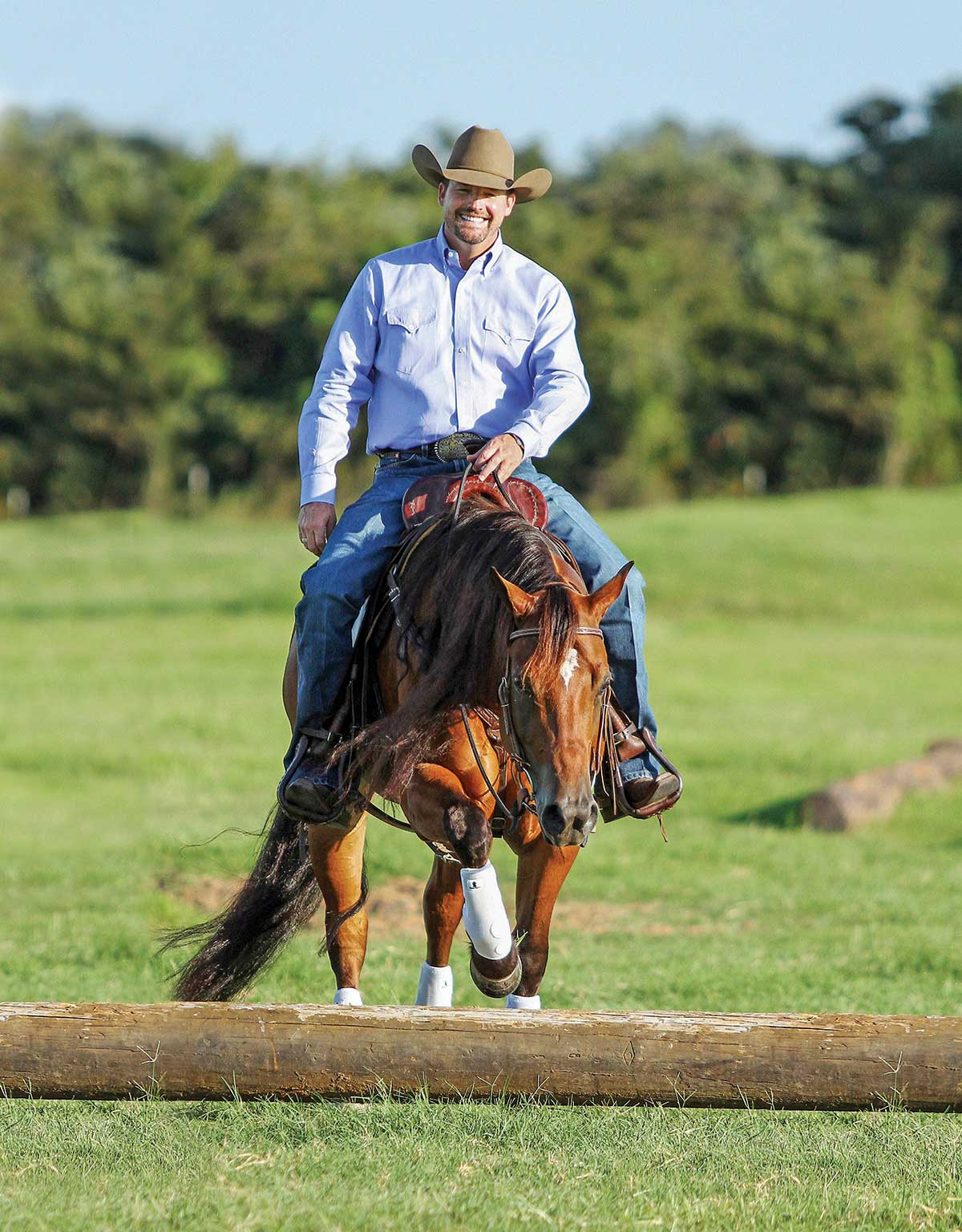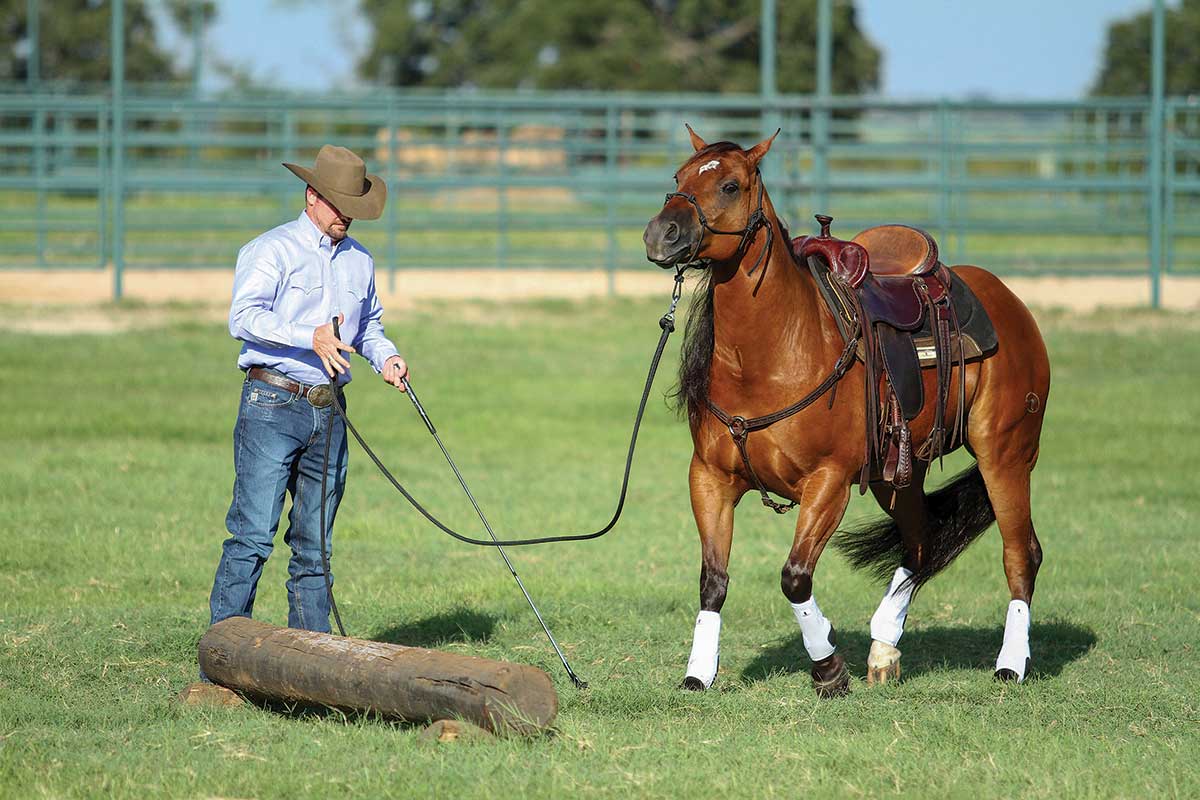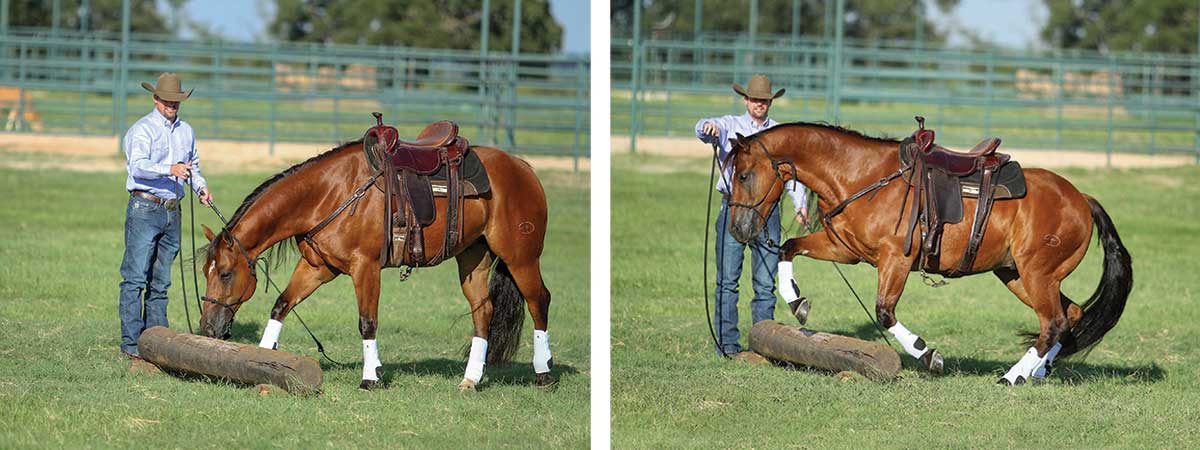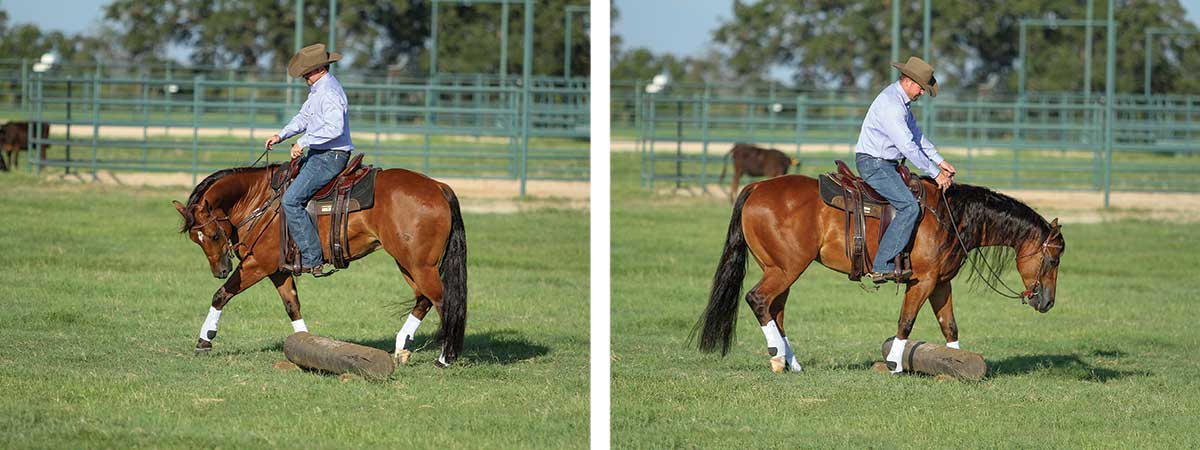
Is your horse afraid to step over logs and other obstacles on the trail? He has good reason. Nature tells him to protect his legs from the unknown, as a lameness-causing injury can separate him from the herd and turn him into a predator’s meal. So, all things considered, he’d rather avoid anything that could involve a possible misstep or stumble.
You can, however, condition him away from this fear. With my method, instead of fighting to get him over that log, you’ll use approach-and-retreat, first on the ground and then mounted, to help him realize what you’re asking isn’t going to hurt him, and to make stepping over his idea.
A big advantage of this method is that it doesn’t require a lot of space. If you’re ever faced with needing to get your horse over an obstacle on a narrow trail, you’ll be able to perform approach-and-retreat right there on the spot.
Why This Method Works
Approach-and-retreat is like a cat-and-mouse game that allows you to build your horse’s confidence in any situation without forcing him to do anything. It avoids a battle of wills. If you try to boot your horse over an obstacle, he’ll simply plant his feet and resist, or try to escape by rearing or bolting. Petting him while he stands dithering in front of it just rewards him for not stepping over.
By keeping his feet moving instead, you keep him loose and listening to you until he realizes what you’re asking of him is no big deal. While you behave almost nonchalantly about getting him over, it takes the pressure off so he can learn.


On the Ground
If you can work your horse from the ground first, it’ll make the mounted part easier. Begin by asking your horse to approach the obstacle. Then stop his forward movement before he stops himself.
For example, if you sense he’s going to balk after five steps toward the log, stop him after four steps. Then back him away from the log. Then ask him to go forward again, and before he stops by himself, stop him and back him away once more.
Throughout this training, it’s essential that the stopping is always your idea, not his. Also, the more you ask him to retreat from the obstacle, the more it seems you don’t really want him to go right up to it, and the more you do that, the more curious your horse becomes. This works to your advantage!
Each time you ask him forward, try to let him come a little closer to the obstacle, while always stopping him before he stops on his own. Once he’s fairly close, if he tries to smell and investigate the log, let him. Horses sometimes need to perform their own little safety check on an object before they’re comfortable with it.
If you continue patiently with approach-
and-retreat, eventually your horse will go over the log. At first, he may fumble over it or jump it in a hurry. That’s normal and should be expected. With practice, he’ll relax and figure out how to place his feet and negotiate the obstacle neatly. Don’t try to micromanage his feet at this point.
When he’s stepping carefully, encourage him to stop and rest when he’s halfway over the log. Let him know that going over really is just no big deal.


Mounted
Once he’s negotiating the obstacle willingly and confidently from both sides, it’s time to mount up and ride him over the log. You’ll use the same strategy in the saddle that you used on the ground—that is, making it your horse’s idea to step over the obstacle.
Approach the log at a walk. If he now walks right over willingly, let him. But if you sense that he might stop, go ahead and whoa before he does so, and immediately back him away from the log. Then ride him forward again, trying to get a bit closer this time but again stopping before he stops on his own. Back away once more.
Continue approaching and retreating in this manner. As you do so, don’t even think about getting your horse to step over the log. Instead, concentrate on getting him to back straight away without getting heavy on the bit. Work on keeping him light and responsive.
Soon, your horse will be less concerned about avoiding the obstacle and more involved with tuning in to you.
Eventually, you’ll sense that your horse is ready to step over the log of his own accord. Let him, encouraging him to take his time. If he wants to stop halfway over it, that’s fine. Rub on him and let him rest.
Once he’s all the way over, bend him around in a few circles to ensure he stays soft and is paying attention to you. Often, when horses first negotiate an obstacle, they want to get across and away from it as fast as possible. Bending in circles teaches your horse to stay soft and respect your cues instead.
After the bending, take him over the obstacle again, from the opposite direction, and continue going back and forth until he’s completely blasé about it.
Clinton Anderson, Stephenville, Texas, is a clinician, horse trainer, and competitor. Learn more about his clinics, appearances, and educational materials at his Web site, DownunderHorsemanship.com.






